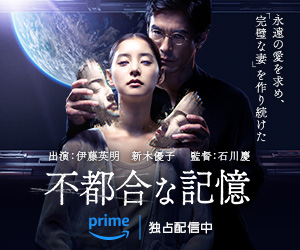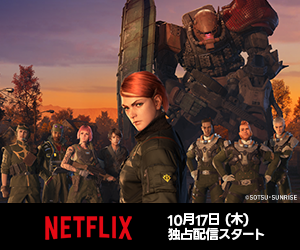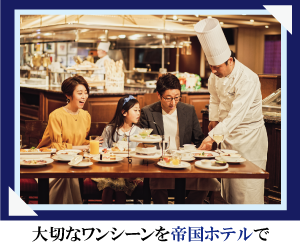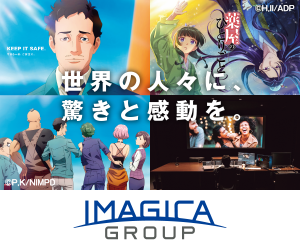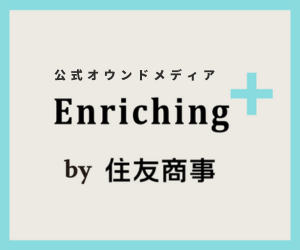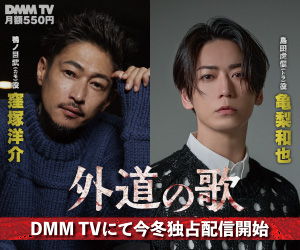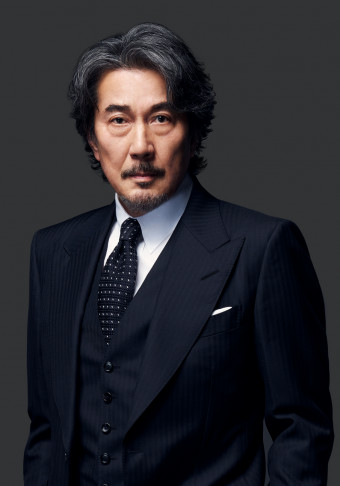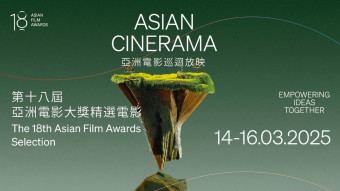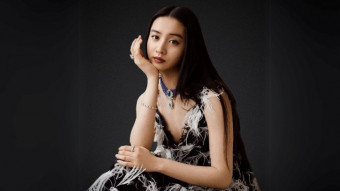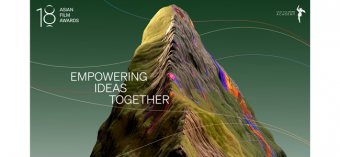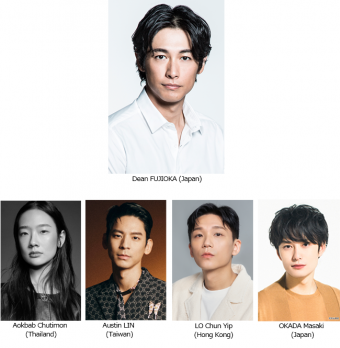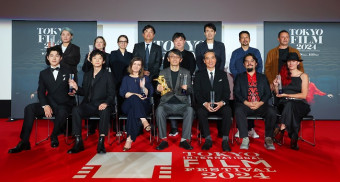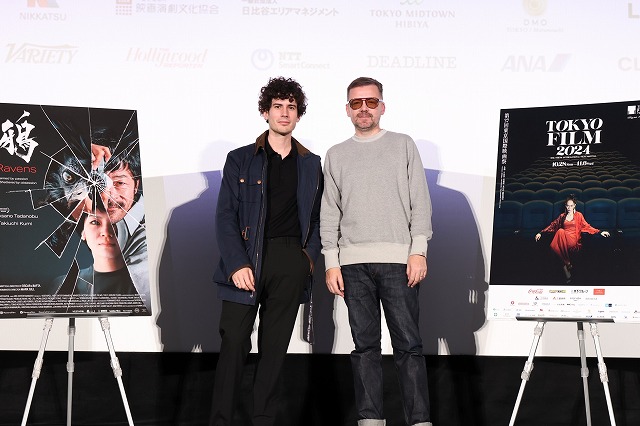
Mark Gill’s France/Japan/Spain/Belgium co-production Ravens had its Asian premiere in the Nippon Cinema Now section of the 37th Tokyo International Film Festival, and on November 1, the writer-director and his cinematographer Fernando Ruiz met the audience for a post-screening Q&A session. While the film’s busy star, Asano Tadanobu, was unable to be there, his presence loomed large (as it does in the film, in which he portrays legendary photographer Fukase Masahisa).
Gill is known for his Morrissey portrait England Is Mine (2017), which was nominated for the Michael Powell Award for the Best New British Feature, and the short film The Voorman Problem (2011), which was Oscar and BAFTA nominated. But Ravens puts him on that very short list of foreign directors who have made films in Japan.
Asked about the impetus, he responded, “When I discovered the story it was so compelling, and that’s what you’re doing as a writer-director, looking to fall in love with a story. Then you have no choice. You need to be in love with it to keep the energy going and to attract other people along the way. That it was Japanese was even better.”
Although the film sketches in autobiographical dates and details, it is not a standard biopic by any means. With the approval of the Masahisa Fukase Archives, Gill creates a staggeringly beautiful portrait that is more than worthy of Fukase’s own work (much of which is featured). The tortured artist that we get to know in Ravens is no bland simulacrum; when we first meet him, he is a young man in Hokkaido, trying to escape the emotional abuse of a tyrant father (Furutachi Kanji of Harmonium), and to avoid his inevitable fate: taking over the family photography studio.
Later, in Tokyo, we see the moment Fukase’s fame is first sparked: when his wife gives birth to a stillborn child, the artist (now a commercial photographer played by Asano) first hugs it and then takes a photo. It will soon appear in a celebrated but controversial exhibition of his work that includes photos of pigs being led to slaughter. Sometime after that, Fukase meets and falls for the smart, beautiful Wanibe Yoko (Takiuchi Kumi of A Balance). She becomes his muse, wife and helpmate for the rest of his tragic life.
The film’s title is drawn from Fukase’s decade-long obsession with Japan’s karasu crows, which are raven sized. After photographing them all over the country from 1976 to 1985, he published what is considered his masterpiece, the monochrome photobook “Ravens.”
It’s no secret that he identified with the birds’ intelligence and solitude. Gill has taken it a step further: in his film, a chain-smoking, man-size raven (artist José Luis Ferrer) conducts conversations with Fukase from an early age, alternately encouraging and castigating him. “Throw him out!” says the bird, when Fukase’s disapproving father shows up for a visit at one point. “But he’s my father,” Fukase argues. “So what?” responds the bird. “I pecked out my father’s eyes. They tasted of Justice.” The bird is a bold choice, but one that elevates Ravens to art.
Asked when he first came up with the idea, Gill said, “I think it was probably around draft 3. Asano came aboard at draft 2 and then Covid happened. By that time, I’d met the real Yoko and learned more about Fukase. But I felt like I wasn’t getting to know him [in the script]. I wanted him to talk more, and I wanted a character that was a bit more fun, to bring a little light into the story, which was quite dark. I found Tsukuyomi, the god of the moon in Japanese mythology, and he seemed perfect. We all have a raven inside of us.”
One viewer mentioned that Asano is known for improvising, and wondered if Gill remembered any scenes in which he did that. “Maybe all of them,” admitted Gill. Noting that he’s first seen him in Ichi the Killer, he explained, “When you cast Asano-san, you cast him for those very reasons. As a writer, you want to give your words to someone who takes initiative. You don’t need to direct him, you just need to watch him. He’s a wonderful collaborator, he was the only person on my [casting] list. I wouldn’t have made it without him.”
Ruiz concurred. “Every day going to set was like the happiest day, because he’s so talented and being near him, was amazing. You can see it and feel it through the lens. I felt really privileged to watch him performing. He’s an amazing talent and a lovely person, as well.”
Asked what it was like working with Gill, Ruiz commented, “I would need three hours to answer that. But the short answer is that it was incredible, a dream come. He’s a true collaborator; he makes you feel comfortable coming to him with ideas, no matter how bad, like you’re essential to the creative process, like you’re part of a family. I wish everyone was like him.”
Another viewer asked whether the director had seen Tokyo Biyori (1997), about the wife-muse of photographer Araki Nobuyoshi, in which Asano had a small part. “Were you inspired by that or any other film?” she asked. Responded Gill, “I’ve not seen that film, sadly. I’ve seen a lot of Japanese cinema, mostly the older classics like Naruse Mikio, who made a lot of films about women. I think Yoko was just as important a character to me (as Fukase). An Actor’s Revenge by Ichikawa Kon was really the only film that influenced me, and one of the producers on that film was a producer on this film, as well.”
Asked about the songs from the Showa era that were used in the scenes set in the 70s, Gill said, “I think I was picking the music long before I wrote it. I always create playlists for my films. I was working with my producer [Ishii Fukasawa Megumi] and we were checking the titles I had carefully to make sure about accuracy. I was just listening to things that feel right. I was a musician before I made movies.”
Since most of the dialogue is in Japanese (the raven actually speaks Spanish-accented English), another viewer wondered how Gill had decided on set whether the performances were okay. “I wrote the script in English and it was translated into Japanese,” he explained. “I had a really good first assistant director, so I was always double-checking with him. I think 90 percent of the time, there was no problem with the language barrier. More often than not, the Japanese actors would suggest things that were easier to say or a slightly different way to say it. I had good Japanese assistants who had my back and made sure we were staying close to the script. If I believed what I saw [in the performance], then I knew it was fine.”
Q&A Session: Nippon Cinema Now
Ravens
Guests: Mark Gill (Director/Screenplay/Producer), Fernando Ruiz (Director of photography)














